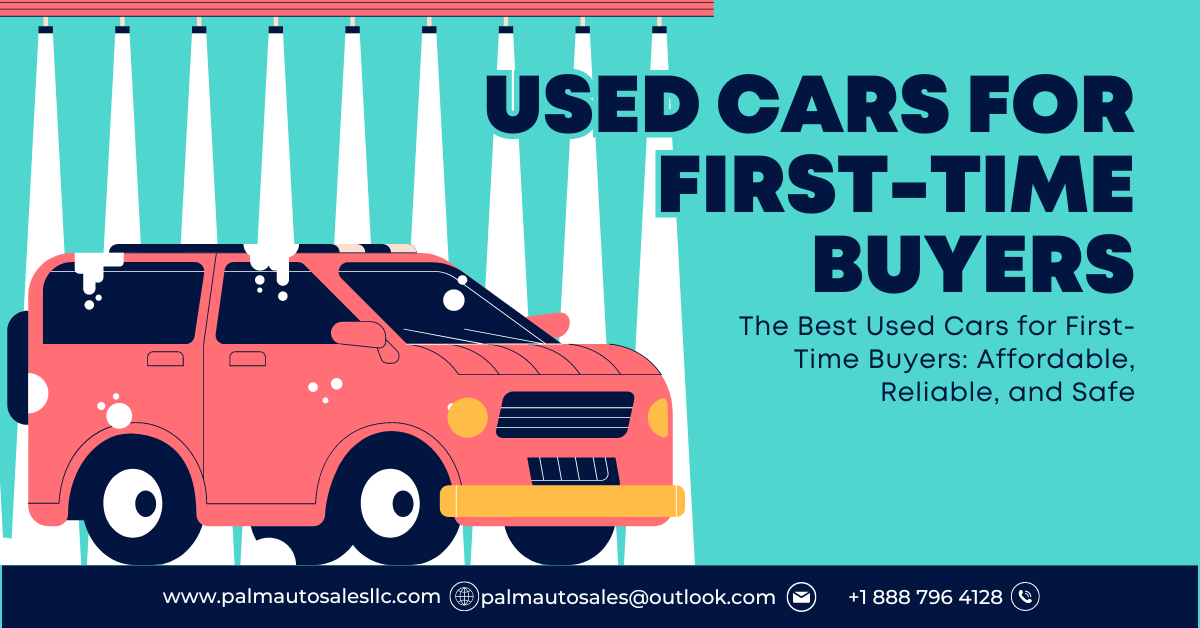When it comes to buying a used car, the process can be both exciting and daunting. With so many options available, it’s crucial to approach the decision systematically to ensure you find a vehicle that meets your needs, fits your budget, and provides long-term reliability. Here’s a comprehensive guide to help you navigate the process of choosing the right used car.

Assess Your Needs
Before starting your search, it’s essential to evaluate your lifestyle requirements. Here are some key factors to consider:
Passenger Capacity and Cargo Space
If you have a family or frequently transport passengers, you’ll need a car with ample space. Consider the number of seats you need and whether the car has sufficient cargo room for your daily needs.
Daily Commuting Needs
If you commute regularly, fuel efficiency and reliability are critical. Look for cars known for their durability and low maintenance costs. For city driving, compact cars might be ideal, while highway driving may require a car with better fuel efficiency on long trips.
Driving Preferences
If you enjoy off-road adventures or live in an area with harsh weather conditions, you’ll need a car that can handle these demands. Features such as four-wheel drive, high ground clearance, and robust suspensions can be essential.
Set a Budget
Determining your budget is a vital step in the process. Here’s how to approach it:
Calculate Your Affordability
Assess your financial situation by calculating your income, expenses, and any outstanding debts. Decide how much you can comfortably spend on a used car, including the purchase price, insurance, maintenance, fuel costs, and potential repairs.
Financing Options
If you’re not paying cash, explore different financing options. Compare interest rates and terms from banks, credit unions, and dealerships. Ensure you understand all the terms and conditions before committing to a loan.
Research Makes and Models
Identifying reliable brands and models is crucial for long-term satisfaction.
Reliable Brands
Brands like Toyota and Honda are often recommended for their reliability and longevity. However, it’s important to research down to the exact year, model, engine, and transmission type, as some models may have specific issues or recalls.
Read Reviews and Check Ratings
Read expert reviews and long-term owner reviews to get a comprehensive view of the car’s performance and reliability over time. Websites like Kelley Blue Book, Edmunds, and consumer forums can provide valuable insights.
Key Features to Consider
When selecting a used car, several key features should be at the top of your list:
Fuel Efficiency
If you’re looking to save on fuel costs, consider cars with good fuel efficiency. This can be particularly important if you have a long commute or drive frequently.
Safety Features
Safety should always be a top priority. Check the car’s safety ratings from organizations like the Insurance Institute for Highway Safety (IIHS). Features such as airbags, anti-lock braking systems (ABS), and electronic stability control are essential.
Maintenance Costs
Some cars are more expensive to maintain than others. Research the cost of parts and the frequency of maintenance for the models you’re interested in. Japanese cars, for example, are often praised for their affordability in terms of parts and labor.
Resale Value
Consider the resale value of the car. A vehicle that retains its value well can be a better investment in the long run, even if it costs a bit more upfront.
Vehicle History
A vehicle history report from services like Carfax or AutoCheck can provide critical information about the car’s past, including any major accidents, previous owners, and service records. This report can help you avoid cars with hidden issues.
Test Drive and Inspection
Once you’ve narrowed down your options, it’s time to take the cars for a test drive and conduct a thorough inspection.
Test Drive
Take the car on a variety of roads to get a feel for how it handles. Check for visibility, particularly any blind spots, and ensure the brakes are responsive and predictable. Test the car’s acceleration, stopping power, and overall driving feel. Don’t forget to check the back-seat legroom, cargo capacity, and any other features that are important to you.
Exterior and Interior Inspection
Inspect the car’s exterior for any scratches, dents, or rust. Check that body panels line up evenly and that the paint color matches on all parts. Inside the car, look for any signs of wear and tear, and ensure all technology and safety features are functioning properly.
Mechanical Inspection
Before making a purchase, take the car to a trusted mechanic for a thorough inspection. This can cost between $100 to $300 but is well worth the investment to uncover any potential issues. If the seller is hesitant about this, it could be a red flag.
Financing and Purchase Options
Understanding your financing and purchase options can help you make an informed decision.
Certified Pre-Owned (CPO) Vehicles
CPO vehicles have been through a rigorous inspection process by a dealership and come with a manufacturer-backed warranty. While they are generally pricier than non-certified used cars, they offer peace of mind and additional benefits like roadside assistance and special financing offers.
Private Sellers vs. Dealerships
Decide whether you prefer to buy from a private seller or a dealership. Private sellers may offer lower prices, but you’ll typically get better protection and services from a dealership. If buying from a private seller, use services like Kelley Blue Book’s Private Seller Exchange to manage the process safely.
Additional Costs and Considerations
Besides the purchase price, there are several other costs to consider:
Ongoing Expenses
Factor in insurance premiums, fuel costs, routine maintenance, and potential repairs. These costs can add up over time and should be included in your overall budget.
Unexpected Expenses
Ensure you have an emergency fund in place for any unexpected repairs or issues that may arise. Proper maintenance can help mitigate these risks, but it’s always good to be prepared.
Conclusion
Buying a used car can be a smart and cost-effective decision if you approach it with the right mindset. By assessing your needs, setting a budget, researching reliable models, and conducting thorough inspections, you can find a car that meets your lifestyle and financial requirements. Here’s a quick recap of the key steps:
- Assess Your Needs: Consider your daily driving requirements, passenger capacity, and any specific features you need.
- Set a Budget: Calculate your affordability and explore financing options.
- Research Makes and Models: Look for reliable brands and models, and read reviews to ensure you’re getting a car with a good track record.
- Key Features: Consider fuel efficiency, safety features, maintenance costs, and resale value.
- Test Drive and Inspection: Take the car for a test drive and have it inspected by a mechanic.
- Financing and Purchase Options: Evaluate CPO vehicles and decide between private sellers and dealerships.
- Additional Costs: Factor in ongoing and potential unexpected expenses.
By following these steps, you can ensure that your used car purchase is both satisfying and financially smart.







